Electrical Earthing is the process of transferring electrical charge to earth with the help of a very low resistance wire. The equipment part that is normally at zero potential is connected to the earth. Also live part- Neutral of three-phase 4 wire system is connected to the earth.
The symbol of electrical earthing is as given below.
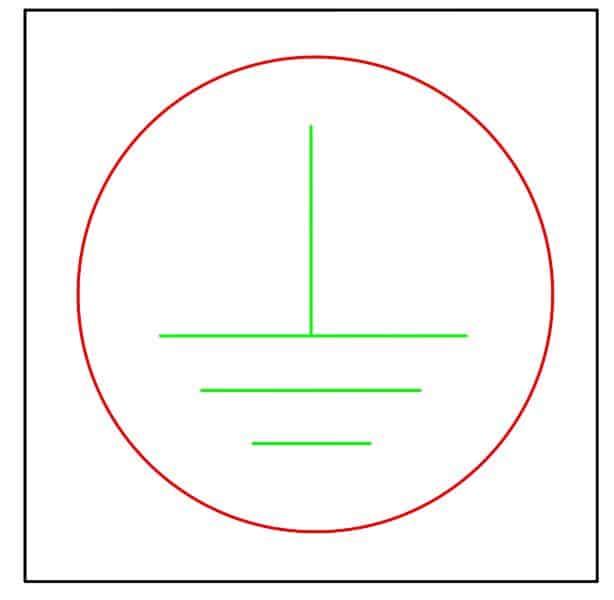
Electrical Earthing is most important for protection of people and electrical machines.
The earthing provides the least resistance path to fault current.
It is not desired to transfer the electric current to the ground or earth in a power system during healthy conditions. The equipment is designed to carry the rated current without failing. However, the insulation of the electrical equipment may fail after giving its useful life. When the insulation of the equipment fails, the metallic enclosure attains live potential.
If anyone touches the enclosure at the instant of fault, the person will get an electric shock. It is desired that the metallic enclosure of the electrical equipment must attain the potential equal to the earth potential at the time of occurrence of the fault in order to protect the equipment and person. The fault current can be diverted to the earth by earthing the metallic enclosure or frame. The process of diverting fault current to ground or earth is called earthing. In other words, under earth fault conditions, the transfer of electric energy to earth through a low resistance path is called earthing.
The electrically conducting body or enclosure of the electrical equipment which does not have any electrical potential when there is no fault is connected to the ground or earth through the galvanized iron strip of suitable current carrying capacity. This process is known as electrical equipment earthing.
When the live part of the supply system is termed as a neutral point which is at zero potential when there is no fault in the system or there is a balanced current in all three phases is connected to the earth pit. This process is called system grounding.
The earthing or grounding provides the least impedance path to fault current and the fault current quickly sinks in the ground and faulty phase potential immediately drops to zero value equal to earth potential. Thus, the earthing system protects the system, equipment, and person working in the area.
Types of Electrical Earthing
The equipment and neutral point of the supply system which does not carry the current during normal operation. However, at the time of the fault, the equipment body or the neutral point of the supply system attains the phase voltage. According to the process of earthing of the frame or enclosure of the electrical equipment and neutral point of the supply system, the earthing is classified into two categories.
- Neutral Earthing
- Equipment Earthing
Neutral Earthing
The neutral earthing is provided in the equipment which has star point. The neutral of the transformer and generator which have neutral points is directly connected to the earth through a GI strip or GI wire. In normal operation, the neutral point is at zero potential and no current flows from the neutral point to earth.
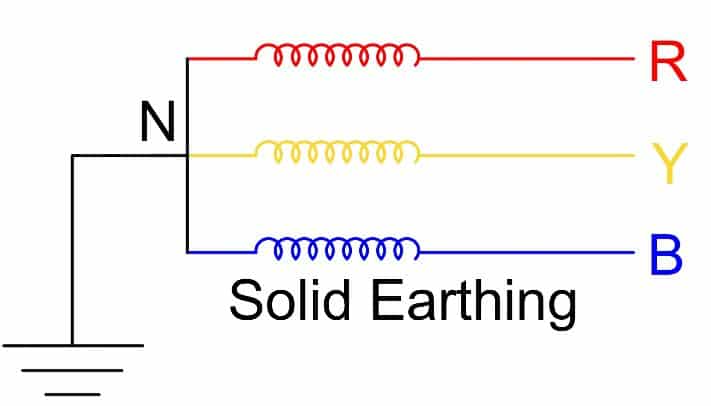
However, in the case of fault, the fault current flows from a neutral point to earth. This type of earthing is called grounding or system grounding. The neutral earthing can be of solid earthing, resistance earthing, and reactance earthing.
Equipment Earthing
The electrical equipment metallic frame or metallic enclosure is connected to the earth through a conducting GI strip or GI wire.
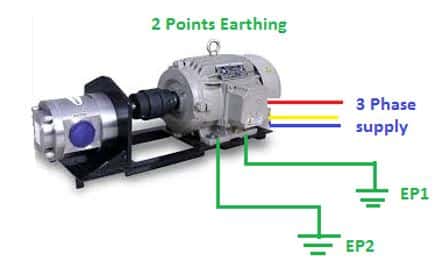
In two points earthing, two distinct points of the frame are connected to two separate earth pits in order to ensure perfect earthing. In case of fault, the current flows from the frame of the equipment to the earth and thus protects the equipment, power system, and person.
Why Earthing Important?
The earthing is a very important part of electrical installation and it must be done as per the electricity rules. Earthing system must be checked regularly to ensure the correctness and readiness of the earthing system. The earthing is of paramount importance because of the following reasons.
- Earthing protects the personnel from an electric shock.
- The earthing protects the equipment from high voltage caused by fault, transients or lightning because the fault current passes through the least impedance path of earthing system and potential fall to zero.
- Earthing minimize the risk of fire.
Thus as per the electricity law, every electrical equipment frame or enclosure must be earthed from two points and there should be two separate earth pits. Also, for system grounding, there must be a separate earthing circuit. The GI strip or wire connected to the neutral point must run on the insulators and must be directly connected to the earth pit.
How Earthing Protects person from an electric Shock?
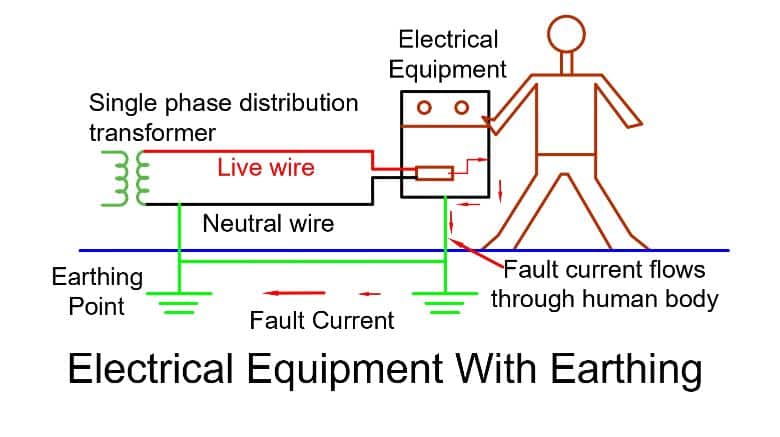
If the metallic enclosure of the electrical equipment is not earthed, the enclosure attains the live potential if a fault occurs in the equipment due to insulation failure. Now, if a person touches the enclosure his body will attain the live potential and the current completes the path through his body. The factors like amplitude, duration, and frequency of current decide the severity of shock. The magnitude of current flowing through the body causes the following effects on the human body.
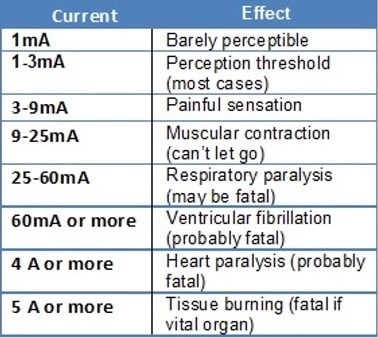
A 30mA current passing through the human body can cause electrocution. Therefore, an Earth Leakage circuit breaker is used to isolate the faulty circuit if the leakage current is 30mA.
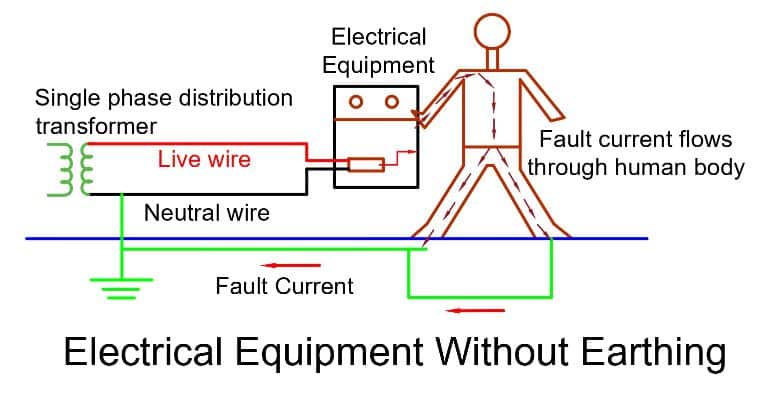
Now if the equipment frame or enclosure is connected to the earth, the live potential attained by metallic enclosure will immediately drop to zero because the metallic frame now is at zero potential. Thus, when equipment is earthed, the fault current does not flow through the human body and the fault current directly sinks in the earth.
Read Next :